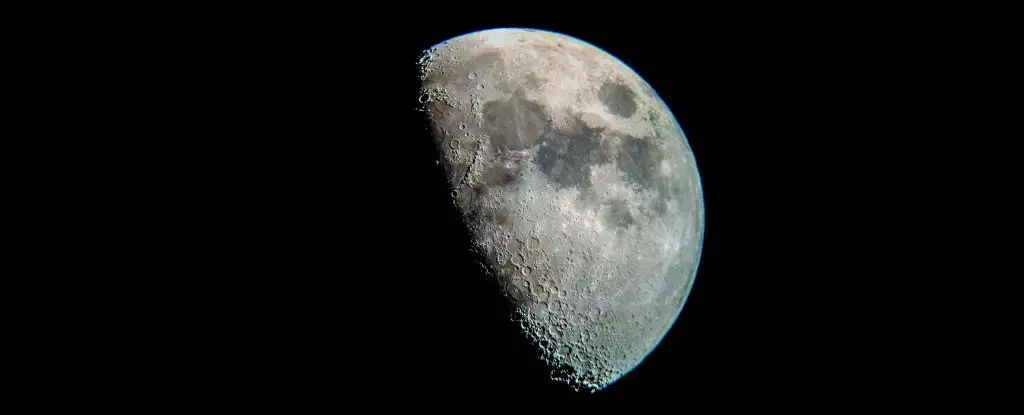The age-old question of how the Moon was formed may have found a new answer that redefines our understanding of lunar history. Recent research conducted by a collaborative team of scientists from the United States, France, and Germany proposes that the Moon could have originated much earlier than previously believed—potentially as far back as 4.53 billion years ago. This timeline shift, hundreds of millions of years ahead of earlier estimates, raises intriguing implications for both lunar and terrestrial geology.
Up until now, the prevailing theory about the Moon’s genesis revolved around a colossal impact event. According to this widely accepted model, a Mars-sized celestial body collided with the nascent Earth around 4.35 billion years ago, displacing a significant amount of Earth’s material into orbit, which eventually coalesced into what we know as the Moon. This hypothesis had formed a bedrock for understanding the Moon’s surface characteristics, including the presence of ancient impact basins and the lack of metallic elements found on its surface compared to Earth. However, the new research, spearheaded by geologist Francis Nimmo from the University of California, Santa Cruz, challenges these assumptions.
Understanding Zircon’s Role in Lunar Dating
One key component of the new findings involves the analysis of lunar zircon crystals. These tiny gems serve as natural time capsules, offering insights into the Moon’s history through their unique formation properties. When zircon crystals form, they incorporate uranium isotopes while rejecting lead. Over time, the uranium decays into lead at a predictable pace, allowing scientists to accurately date the crystal’s formation.
In a surprising twist, some zircon crystals retrieved from the Moon have shown ages significantly older than the previously accepted timeline, with one sample dating back to 4.46 billion years and another to 4.51 billion years. These ages imply that some form of geological activity was present on the Moon well before the theorized giant impact event. The research team faced a daunting challenge: how to reconcile these older zircon ages with the dominant model that suggested a magma ocean enveloping the Moon immediately following its formation, which would be incompatible with such ancient zircons.
To address this disparity, Nimmo and his colleagues developed a fresh perspective on the Moon’s history. They proposed that the Moon did indeed form earlier—between 4.43 and 4.53 billion years ago—followed by a period of widespread crustal remelting around 4.35 billion years ago, coinciding with the proposed impact event. Scientific models suggest that in its early years, the Moon’s orbit was likely eccentric, causing gravitational tugging that generated significant tidal heating. This heating could have induced melting of the lunar surface, effectively erasing some of the older geological features, including impact basins.
The ramifications of this idea are profound. If the early Moon experienced this kind of intense geological reshaping, it would explain both the presence of ancient zircons and the relative scarcity of large impact craters. The research indicates that during this tumultuous time of remelting, much of the surface’s geological history could have been obliterated, a theory that aligns nicely with earlier conundrums regarding the Moon’s surface features.
The findings also trigger new considerations about the long-lasting relationship between Earth and its Moon. With the Earth estimated to have formed around 4.54 billion years ago, these new results suggest that our planet and its natural satellite have been companions for almost their entire existence. This close relationship may provide essential insights into the simultaneous evolution of both bodies and could shed light on the dynamics of the early Solar System.
Additionally, the study offers intriguing answers regarding the disparity in metallic content between Earth and the Moon. On Earth, metals generated during the planet’s formation remain largely accessible, while on the Moon, they appear to have vanished from the surface layer. If the Moon underwent a period of remelting post-formation, any metals contained within would have migrated deeper into the lunar crust, potentially explaining their diminished presence.
Recent research allows us to reconsider the timeline of the Moon’s formation and its historical significance. By integrating new zircon dating techniques and reimagining the early dynamics of lunar geology, scientists provide fresh insights into the Moon’s origins—offering clarity on previously puzzling observations regarding craters and composition. As this fascinating story continues to evolve, the Moon serves as a valuable window into the past for our planet, deepening our understanding of how celestial bodies interact and change throughout eons of time.

